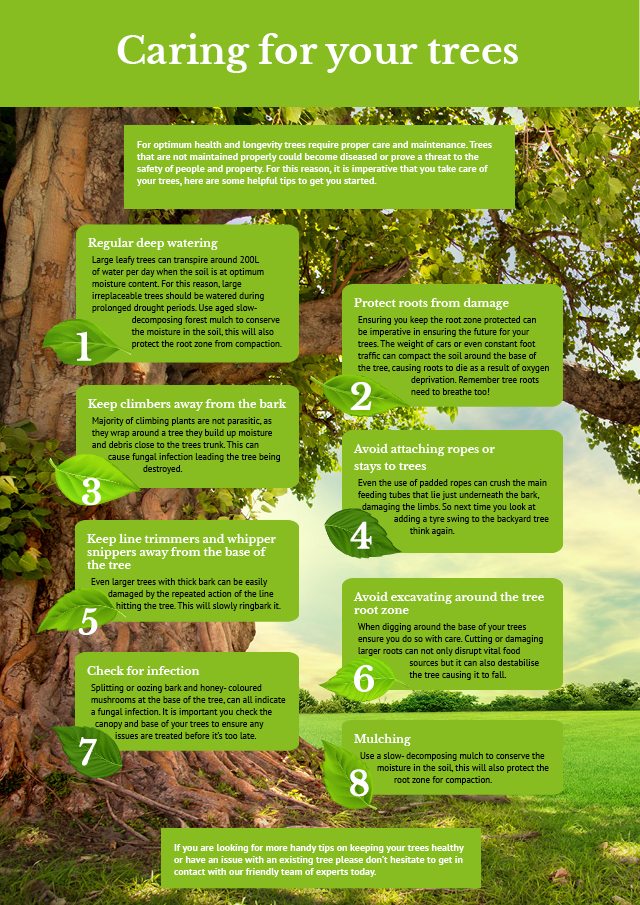Seasonal Tree Monitoring: Strategies For Taking Care Of Trees Prior To And After Their Removal
Seasonal Tree Monitoring: Strategies For Taking Care Of Trees Prior To And After Their Removal
Blog Article
Web Content Created By-
When it concerns seasonal tree care, ensuring proper administration before and after removal can substantially affect the health and appearances of your landscape. By recognizing the required actions associated with analyzing tree wellness and preparing for removal, you can proactively safeguard your residential or commercial property. But what regarding just click the up coming web site to adhere to once the tree is gone? Keep tuned to find the important post-removal treatment steps that will certainly aid you cultivate a thriving and sustainable atmosphere for your trees.
Pre-Removal Tree Treatment
Prior to attending to the removal of a tree, it's critical to focus on pre-removal tree treatment. Start by evaluating the tree's wellness and structural honesty. Search for signs of condition, bug infestations, or any architectural problems that might posture a safety threat throughout removal. https://zanerlgzt.sharebyblog.com/29845718/wind-through-your-tree-removal-project-with-professional-pointers-and-methods-that-assure-safety-and-efficiency-find-the-vital-aspect-for-a-smooth-procedure to seek advice from a certified arborist to establish the best strategy.
Pruning dead or infected branches can avoid more damage to the tree and ensure a smoother removal process.
In addition, think about the ecological impact of removing the tree. Trees play an essential role in our environment, so growing a brand-new tree in an ideal location can help balance out any type of loss. Ensure that you have the essential licenses and permissions for tree removal, specifically if the tree is safeguarded by neighborhood laws.
Seasonal Maintenance Tips
Examining your tree's needs throughout the year is necessary for its health and wellness and long life. To keep your trees in top condition, adhere to these seasonal upkeep pointers.
In spring, concentrate on trimming to remove dead or broken branches and motivate new growth.
Summer asks for normal watering, particularly during dry spells, to ensure your tree stays hydrated.
As loss methods, watch out for early signs of illness or anxiety, and think about using mulch to safeguard the roots throughout winter season.
In winter months, beware when removing snow from branches to avoid breakage, and remain to check your tree's general health and wellness.
Bear in mind to adjust your care regular based upon the certain needs of your tree species and regional climate. By staying attentive and positive throughout the periods, you can aid your trees thrive and grow for years to find.
Post-Removal Tree Treatment
To ensure the health of your landscape even after tree removal, correct post-removal treatment is crucial. After a tree is removed, it's crucial to load the remaining opening with topsoil and small it to prevent settling. This will help preserve the integrity of the ground and stop potential risks in the future.
Take into consideration planting new plant life instead of the gotten rid of tree to bring back the equilibrium and aesthetics of your landscape. Routinely water the location to promote the growth of new plants and protect against dirt erosion.
Examine the bordering trees for any indicators of illness or stress that may have been caused by the eliminated tree. Watch out for bugs that could've been attracted to the previous tree and take safety nets to protect the remaining greenery.
If necessary, speak with a professional arborist to evaluate the influence of the elimination on the surrounding trees and establish any type of added treatment required. By complying with these post-removal care steps, you can guarantee the ongoing health and beauty of your landscape.
Final thought
Finally, proactive seasonal tree treatment is important for keeping the wellness and equilibrium of your landscape. By assessing tree health, trimming, and speaking with an arborist before elimination, you can ensure a risk-free process. After removal, filling up the hole, planting new plant life, and regular watering will promote new development and stop disintegration. Bear in mind to inspect bordering trees for illness and look for further care actions from an arborist to maintain your landscape flourishing.
